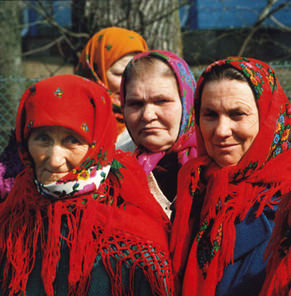Dernières publications
Health Surveillance and Management of Populations affected by a Radiation Accident - can Ethics help?
- Détails
- Catégorie : Communications
- Publication : mardi 10 octobre 2017 13:23
Deborah OUGHTON, Elisabeth CARDIS, Thierry SCHNEIDER, Liudmila LIUSTSKO, Adelaida SARUKHAN
ERPW - 2nd European Radiological Protection Research Week.
10-12 October 2017, Paris.
Abstract
Public concerns about the potential health consequences of radiation exposures rank high after an accident. However, strategies for health surveillance of populations are often at odds with the actual needs of the affected populations and, if not carried out properly, can cause more harm than good. A striking example is thyroid screening carried out after Fukushima, which has been claimed to have exacer- bated rather than alleviated anxiety in the participants and their families.
The EU SHAMISEN project has recently published a set of recommendations concerning health surveillance after a nuclear accident or other disasters. Experience suggested that an update of emergency preparedness in this area was needed for a number of reasons. These include the fact that existing recommendations had a technical focus, with less attention paid to social, ethical, psychological issues and that the information tended to be directed towards the de- cisions made by experts rather than for support of affected populations. Finally, there have been a number of changes in legal and ethical requirements for health surveillance and epidemiological studies (e.g., related to data protec- tion) that need consideration. This paper presents the main conclusions and recommendations of the Shamisen project, with a particular focus on the ethical challenges related to health surveillance. The general recommendations address the need to do more good than harm, to respect dignity and to be sensitive to inequities from variability in the distribu- tion of risk. An overarching theme that is re ected in many recommendations is the promotion of a health surveillance strategy that targets the overall well-being of populations, that addresses not only radiation effects, but also aims to identify and alleviate psychosocial impacts.
Drawing on values identi ed in the ICRP report on the eth- ical foundations of radiological protection (currently out for public consultation www.icrp.org), we identify ethically relevant issues linked to bene cence/non-male cence, dig- nity, justice and prudence. We examine the ethical dilemmas that can arise for decision-makers, with the aim of improving understanding about the challenges of health surveillance and radiation risk management. We conclude that, in order for radiation protection to avoid causing more harm than good, there is a need to: 1) address the societal, ethical and psychological impacts of countermeasures; 2) be transparent about the objectives and aims of health surveillance; and 3) engage local populations in the design, implementation and follow-up of radiation risk assessment and management.
Acknowledgements Acknowledgement: the SHAMISEN project is part of the OPERRA (Open Project for the European Radiation Research Area, grant number 604984), and has also been supported by the Norwegian Research Council (project nr. 263856). The authors thank all SHAMISEN project members and stakeholders for constructive discussions.

 Le Centre d’étude sur l’Évaluation de la Protection dans le domaine Nucléaire (CEPN) est une association à but non lucratif, fondée en 1976, pour évaluer la protection de l’Homme contre les dangers des rayonnements ionisants, sous ses aspects techniques, sanitaires, économiques et sociaux.
Le Centre d’étude sur l’Évaluation de la Protection dans le domaine Nucléaire (CEPN) est une association à but non lucratif, fondée en 1976, pour évaluer la protection de l’Homme contre les dangers des rayonnements ionisants, sous ses aspects techniques, sanitaires, économiques et sociaux.
